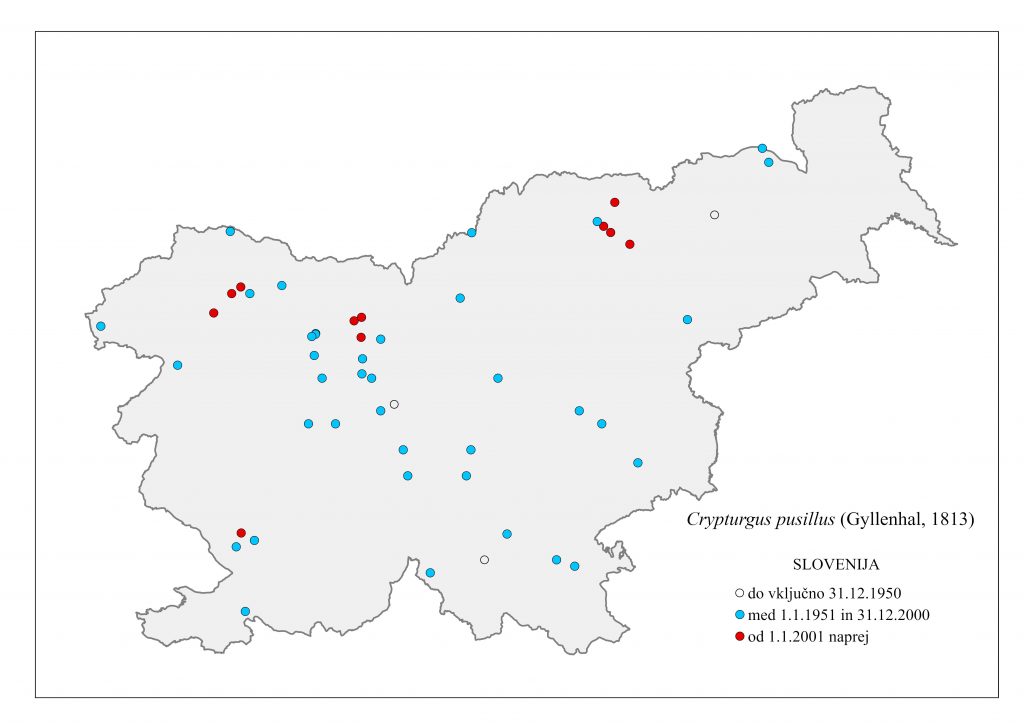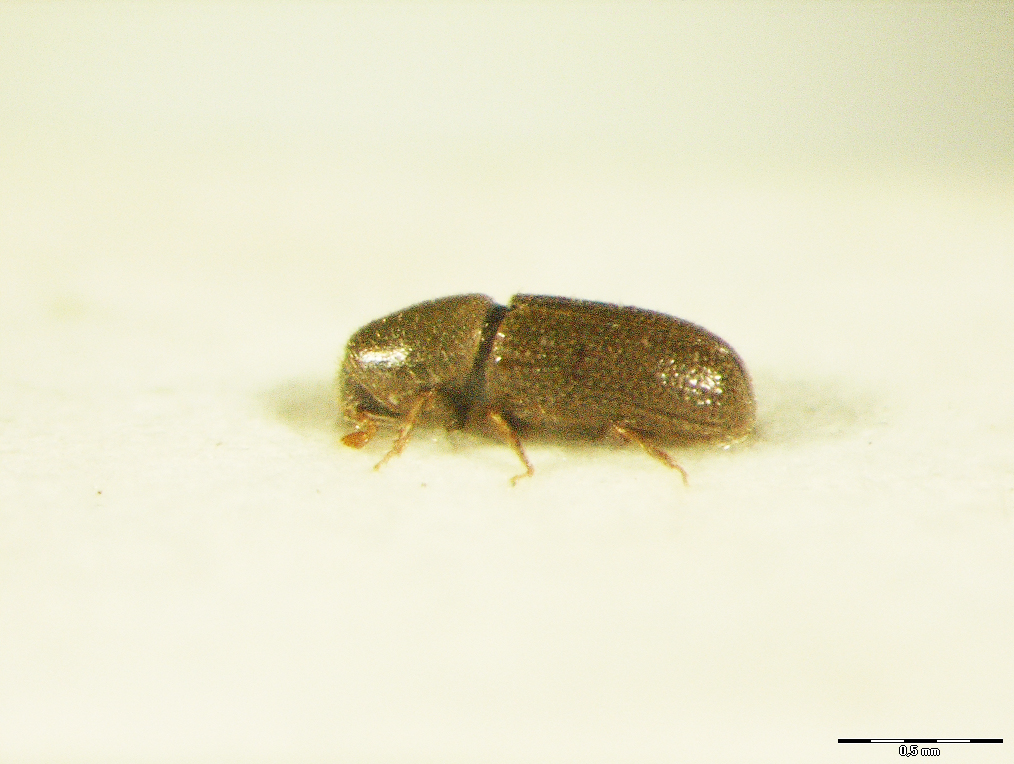23.07. Crypturgus pusillus (Gyllenhal, 1813)
Presence
E: AU BE BH BY CR CT CZ DE EN FI FR GE GR HU IT LA LT LU MC NL NR NT PL PT RO SK SL SP ST SV SZ UK YU
N: AG EG LB MO TU
A: ES FE HEI HP JA JIL KA NC NP PA SC SCH TR UP WS XIZ YUN »NW Himalaja«
NAR
Figure 95: Crypturgus pusillus, dorsal, lateral (Photo: Maja Jurc)
Older catalogs and keys – citations of name
Siegel, 1866: Crypturgus pusillus Gyll.; Grüne 1979: C. pusillus (Gyllenhal, 1813); Titovšek 1988: Crypturgus pusillus (Gyllenhal); Freude, Harde, Lohse 1981: Crypturgus pusillus Gyllenhal; Pfeffer & Knížek 1993: C. pusillus (Gyllenhal, 1813); Pfeffer 1995: C. pusillus (Gyllenhal, 1813).

Figure 96: Crypturgus pusillus, distribution map according to historical and recent data
Ecology and presence in Slovenia
The species is present in Europe, North Africa and the Nearctic. Siegel (1866) states that the species was “rare in Carniola, under the bark of spruce trees”. Today, the species is present and common throughout Slovenia, with the exception of Prekmurje (Figure 96). Hosts include Picea abies, P. obovata, P. orientalis, Pinus sylvestris, P. mugo, P. nigra, P. cembra and P. strobus, rarely also Abies alba, Larix decidua and Pseudotsuga menziesii. In Slovenia, the species has been found on P. abies (continuation of the straight system of Ips typographus, Pityogenes chalcographus, Polygraphus poligraphus, Dryocoetes autographus and Orthotomicus laricis), on P. sylvestris (continuation of the tunnel system of Ips acuminatus, Dryocoetes autographus, Pityogenes bistridentatus and P. chalcographus) on P. nigra (continuation of the tunnel system of Tomicus minor, P. chalcographus and O. laricis) and on L. decidua (continuation of the tunnel system of Ips cembrae). The maternal gallery is short, with larval galleries arising from it in different directions, often intertwining. It develops two generations per year, the first swarming in April and May, the second in July. The species is highly secondary, inhabiting trees that have already been colonised by other bark beetles. Adult length is 1.0-1.1 mm. The elytra are shiny, with rare rows of short hairs emerging from the interlinear spaces (Figure 95).


